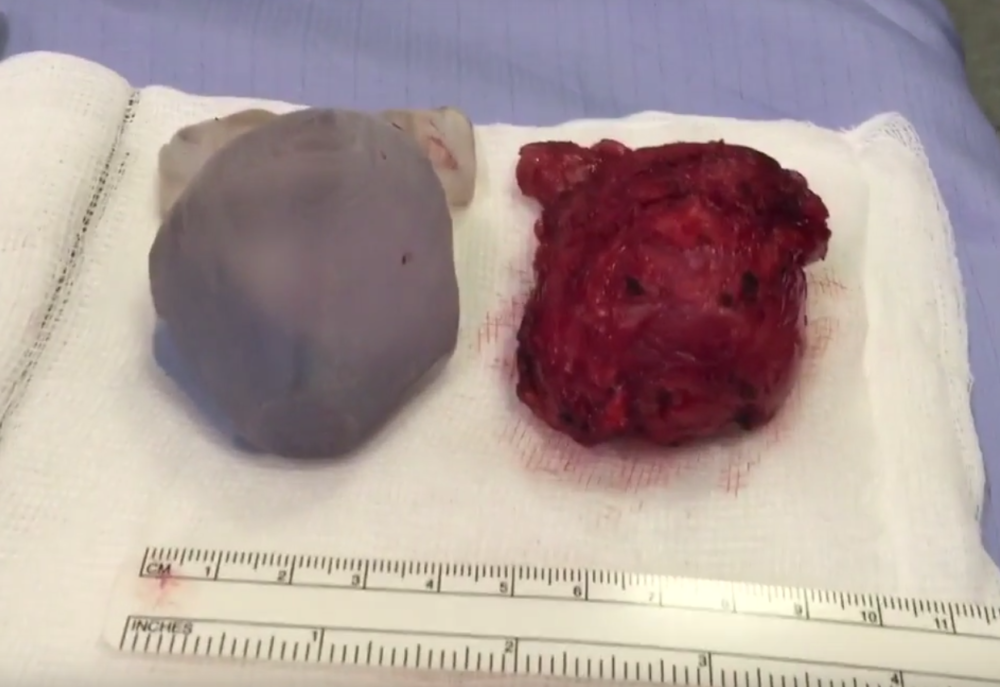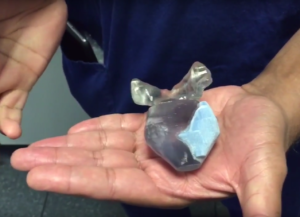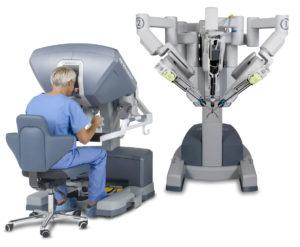3D printed replicas of patients’ organs and internal anatomy for use in surgical pre-planning has very quickly found itself to be one of the more popular new medical 3D printing applications. The ability to turn MRI and CT data into a 3D printable models allows doctors and the rest of the surgical team to get a three-dimensional view of what they can expect to find when they open up their patient. Being able to visualize the surgery in 3D not only leads to more accurate surgical procedures, but it reduces risk and takes out a lot of the guesswork typically involved with medical procedures. But exactly how accurate are the 3D models that are generated by the software that hospitals use to translate MRI and CT data into three dimensions?
It turns out that they are actually pretty accurate. NHS surgeons from the United Kingdom have just completed a groundbreaking operation that used a 3D printed copy of their patient’s prostate as a live guide that helped them safely remove the cancerous growth. While 3D printed prostate gland replicas have been used previously, they were only used in the pre-planning stage. However 3D printed organ replicas have never before been used in real time while doctors were actually performing the operation. During this surgery, while the surgeon was using a state of the art surgical robot to perform the operation, he actually held the replica prostate in his hands. He was using it as a guide to ensure that he was able to safely remove the tumor without damaging any of the delicate tissue that was within millimeters of where the surgeon needed to cut.

You can see the bulging tumor on the prostate gland that was removed matches exactly its location on the 3D printed replica.
Prostate surgeries, while a relatively common and safe procedure, do have some inherent risks that doctors need to be mindful of. When cancerous tumors grow in the prostate gland they tend to sandwich themselves between two very delicate parts of a man’s anatomy. On one side of the gland is the sphincter muscle, and on the other side is a bundle of nerves that control and regulate the ability of the penis to become erect. Removing tumors from this area occasionally leads to inadvertent damage to the sphincter, resulting in incontinence, or to the nerve bundle, which leads to erectile dysfunction. These are naturally two very undesirable outcomes to any surgical procedure. These risks often lead to men putting off the surgery, or choosing less effective treatments for the tumor.
“These bundles are important to the patient. They go to the penis and help with the recovery of erections. Using this 3D model, we can plan surgery better, we can counsel the patient better and we hope to be able to remove the cancer successfully. If I didn’t have this, there would be an element of guesswork,” said Professor Prokar Dasgupta, the surgeon who performed the prostate operation.
The surgery was performed at Guy’s Hospital in South London, one of the NHS’ largest teaching hospitals in the country, and often where new procedures and surgical techniques are perfected before being adopted nationwide. A similar procedure was performed last November when surgeons used a 3D printed organ replica to aid in the transplant of a kidney being donated by a father to his three-year-old daughter. The hospital’s da Vinci Xi surgical robots perform about 300 similarly delicate operations each year, however over-reliance on a robot often means that surgeons can lose their sense of touch, a skill vital to developing the instincts required to do their job properly. The 3D printed replica was so accurate that Dasgupta was able to feel the location of the actual tumor, and it led him right to the correct location of the cancerous growth.
“It shows you the power of MRI, it shows you the power of this software, it shows you the power of 3D printing. If it proves to be as useful as it seems, I think it has a great future,” said Dasgupta.
The 3D printed prostate replica was made at St Thomas’s Hospital, Guy’s Hospital’s neighbor, using precise measurements taken from MRI scan data taken from the patient. The prostate took about twelve hours to 3D print, and it only cost about £150 to £200 ($220 to $290) in materials and labor. Considering the amount of aftercare often required when a surgery of this nature goes wrong, that seems a remarkably smart investment. Do you think surgeries and the use of models like this will become more common? Discuss in the 3D Printed Prostate Model forum over at 3DPB.com.
Here is some video of Professor Dasgupta explaining the procedure:
Subscribe to Our Email Newsletter
Stay up-to-date on all the latest news from the 3D printing industry and receive information and offers from third party vendors.
You May Also Like
Gorilla Sports GE’s First 3D Printed Titanium Cast
How do you help a gorilla with a broken arm? Sounds like the start of a bad joke a zookeeper might tell, but it’s an actual dilemma recently faced by...
Nylon 3D Printed Parts Made More Functional with Coatings & Colors
Parts 3D printed from polyamide (PA, Nylon) 12 using powder bed fusion (PBF) are a mainstay in the additive manufacturing (AM) industry. While post-finishing processes have improved the porosity of...
$25M to Back Sintavia’s Largest Expansion of Metal 3D Printing Capacity Since 2019
Sintavia, the digital manufacturing company specializing in mission-critical parts for strategic sectors, announced a $25 million investment to increase its production capacity, the largest expansion to its operations since 2019....
Velo3D Initiates Public Offering in a Bid to Strengthen Financial Foundations and Drive Future Growth
Velo3D (NYSE: VLD) has been among a number of publicly traded 3D printing firms that have attempted to weather the current macroeconomic climate. After posting a challenging financial report for 2023,...































